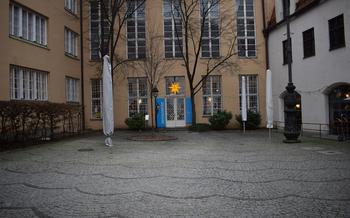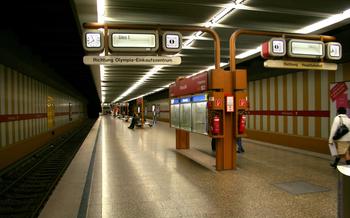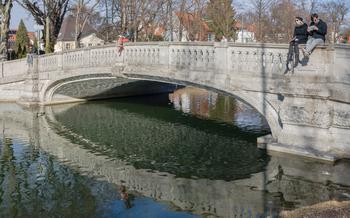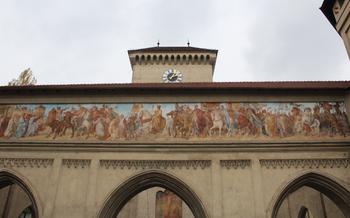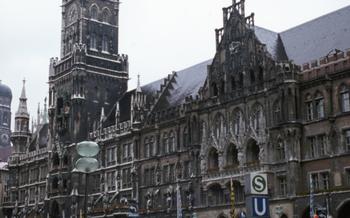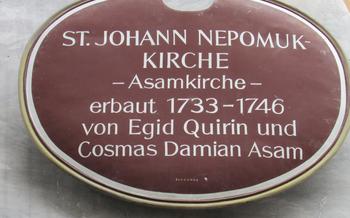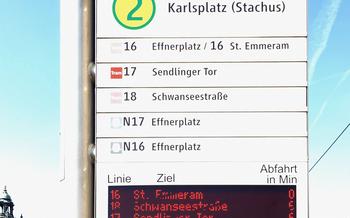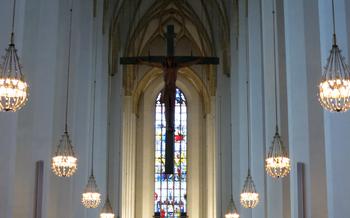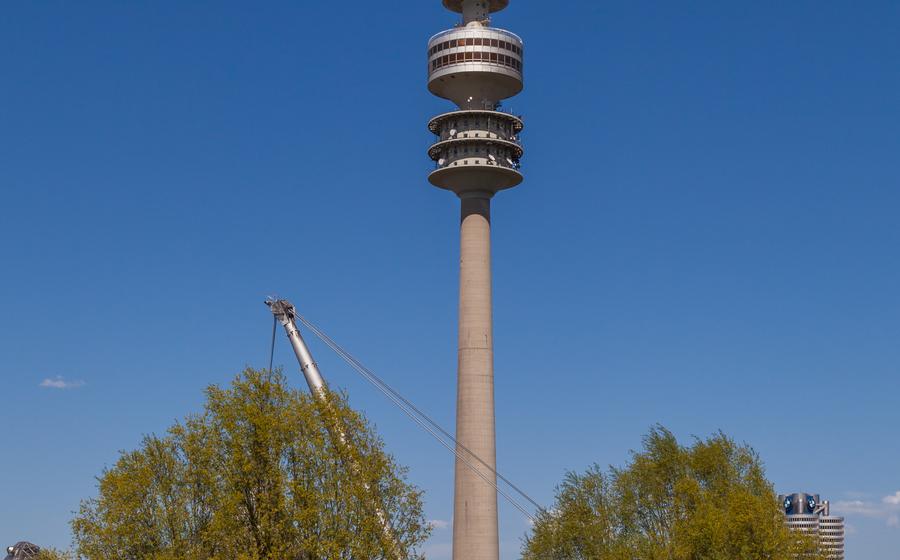
Theresienwiese (Oktoberfest Grounds)
- Oktoberfest in Munich
- Essential Information
- Getting to the Theresienwiese
- Navigating the Festgelände
- The Famous Tents
- Food and Drinks Galore
- Entertainment and Rides
- Family-Friendly Fun
- Accommodation During Oktoberfest
- Traditional Clothing
- Budgeting for Oktoberfest: Estimating Costs and Saving Tips
- Solo Travelers and Groups
- Safety Measures
- Exploring Munich Beyond Oktoberfest
- Insider Tip: Secret Spot for a Unique Oktoberfest Experience
Oktoberfest in Munich
Oktoberfest, the world's largest folk festival, is an iconic celebration held annually in Munich, Germany. With a history dating back to 1810, the festival originated as a royal wedding celebration and has since evolved into a global phenomenon, attracting millions of visitors each year. The festival is renowned for its vibrant atmosphere, traditional Bavarian culture, and of course, its exceptional beer. Held on the vast Theresienwiese fairgrounds, Oktoberfest is a must-visit event for anyone seeking an unforgettable cultural experience.
Essential Information
Oktoberfest is held annually in Munich, Germany, and typically runs from mid-September to the first weekend in October. The exact dates vary slightly each year, so it's advisable to check the official Oktoberfest website for the specific dates. The festival lasts for 16 to 18 days, offering ample opportunities to experience the festivities.
Regarding ticket prices, admission to the festival grounds is free. However, you'll need to purchase tokens or vouchers to enjoy the rides, games, and food. These tokens can be bought at various booths throughout the festival grounds. The prices for rides and food vary depending on the attraction or item.
It's important to note that Oktoberfest is an incredibly popular event, attracting millions of visitors each year. Therefore, it's advisable to plan your trip well in advance. Accommodation, transportation, and festival-related expenses can add up quickly, so budgeting accordingly is essential.
Getting to the Theresienwiese
The Theresienwiese is conveniently located within easy reach of Munich city center. Several transportation options are available to get you to the festival grounds quickly and efficiently.
- Public Transportation: Take advantage of Munich's excellent public transportation system. The U-Bahn (subway) lines U4 and U5 have stops right next to the festival grounds. Alternatively, several tram and bus lines connect the city center to the Theresienwiese.
- Taxi: Taxis are readily available in Munich and can be a convenient option, especially if you're traveling with a group or have luggage.
- On Foot: If you're up for a leisurely stroll, you can walk to the Theresienwiese from the city center in about 30-45 minutes. Simply follow the signs or use a map app to guide you.
Navigating the Festgelände
The Theresienwiese is a vast expanse of land divided into several sections, each with its own unique atmosphere and attractions. To make the most of your Oktoberfest experience, it's essential to have a good understanding of the layout and how to navigate the grounds.
The main entrance to the festival is located on the west side, near the Bavaria statue. From here, you can follow the main path that leads directly to the Bräurosl tent, one of the largest and most popular tents at Oktoberfest. As you walk along the main path, you'll pass by numerous other tents, each with its own distinct character and offerings.
To the left of the main path, you'll find the Oide Wiesn, a section of the festival dedicated to traditional Bavarian culture and history. Here, you can visit the Heimatmuseum (Museum of Bavarian History), watch traditional folk dancing performances, and sample authentic Bavarian cuisine.
To the right of the main path, you'll find the Familienplatz (Family Area), a section of the festival designed specifically for families with children. This area features kid-friendly rides, games, and activities, as well as a variety of food and drink options.
The Festgelände (festival grounds) is also home to a number of other attractions, including a Ferris wheel, a roller coaster, and a shooting gallery. These attractions are located throughout the grounds, so be sure to explore and find your favorites.
To make navigating the Festgelände easier, you can pick up a free map at the information booth near the main entrance. The map will help you identify the location of the different tents, attractions, and other amenities.
The Famous Tents
The Theresienwiese is home to a vast array of tents, each with its own unique atmosphere and charm. From the traditional and rustic Schottenhamel tent, the oldest and most renowned tent at Oktoberfest, to the lively and modern Hacker-Festzelt, there's a tent to suit every taste and preference.
Each tent has its own distinctive character, with different decorations, seating arrangements, and entertainment. Some tents, like the Hofbräuhaus tent, are known for their traditional Bavarian music and dancing, while others, like the Käfer Wiesnschänke, offer a more upscale and elegant experience.
To choose the right tent for you, consider your personal preferences and the type of atmosphere you're looking for. If you want to experience the traditional Oktoberfest vibe, opt for one of the smaller, more rustic tents. If you're looking for a more lively and modern experience, choose one of the larger tents with live music and entertainment.
It's worth noting that some tents are more popular than others, and it can be difficult to get a seat during peak hours. If you have your heart set on a particular tent, arrive early or be prepared to wait in line. You can also reserve a table in advance, but this usually comes with a minimum spending requirement.
No matter which tent you choose, you're sure to have a memorable Oktoberfest experience. So come thirsty, come hungry, and come ready to party!
Food and Drinks Galore
Traditional Bavarian Cuisine and Delicacies:
Prepare your taste buds for a culinary journey like no other at Oktoberfest, as a feast of traditional Bavarian delicacies awaits. Indulge in mouthwatering specialties such as crispy Hendl (roast chicken), juicy Schweinsbraten (roast pork), and Weißwurst (traditional Bavarian sausages). Don't forget to try the famous Obatzda, a creamy cheese spread that pairs perfectly with a fresh Brezel (pretzel). For a sweet treat, savor the delicious Lebkuchenherzen (gingerbread hearts) or fluffy Dampfnudeln (yeast dumplings).
Popular Beverages, Including Beer and More:
Quench your thirst with the iconic beverage of Oktoberfest: beer! With over 14 million liters served annually, it's an integral part of the festival experience. Choose from a wide selection of local and international beers, including the renowned Maß (liter-sized mug) of Hofbräuhaus, Löwenbräu, or Paulaner. If beer is not your preference, enjoy a refreshing Radler (beer mixed with lemonade), a spritzy Prosecco, or a traditional Maß of Weißbier (wheat beer).
Entertainment and Rides
Amidst the lively atmosphere, Oktoberfest offers a wide range of entertainment options to keep visitors enthralled throughout their visit. Traditional Bavarian music, performed by talented bands and musicians, fills the air, creating a festive ambiance. From oom-pah bands to brass ensembles, the music varies from tent to tent, ensuring that there's something for everyone to enjoy.
In addition to the music, numerous amusement rides and attractions add to the excitement of Oktoberfest. The Festgelände is transformed into a temporary fairground, featuring thrilling roller coasters, towering Ferris wheels, and nostalgic carousels. Whether you seek an adrenaline rush or a leisurely ride, there's something to suit every preference.
For those looking for a more low-key experience, traditional Bavarian performances are a must-see. Schuhplattler, a rhythmic folk dance characterized by intricate footwork and hand-clapping, is a popular attraction. Trachtengruppen, groups dressed in traditional Bavarian attire, showcase their dancing skills, offering a glimpse into the region's rich cultural heritage.
Oktoberfest is not just about beer and music; it's a celebration of Bavarian culture and traditions. The entertainment and rides on offer complement the festival's lively atmosphere, ensuring that visitors of all ages can immerse themselves in the unique experience that is Oktoberfest.
Family-Friendly Fun
Oktoberfest isn't just for adults; it's also a great place for families to enjoy themselves. There are several special activities and areas designed specifically for children, ensuring a safe and enjoyable experience for all ages.
The Kinderland (Children's Land) is a dedicated area within the festival grounds where kids can play and have fun. It features a variety of rides, games, and attractions, including a carousel, a Ferris wheel, a petting zoo, and a playground. There are also face painting, balloon animals, and other entertainment to keep the little ones occupied.
Many of the tents also have special areas for families, with activities such as storytelling, crafts, and games. These areas are typically located away from the bustling crowds, providing a more relaxed and family-friendly atmosphere.
It's important to note that while Oktoberfest is generally a safe and family-friendly event, it's still a large and crowded festival, so it's essential to keep an eye on your children at all times. Make sure they have a way to contact you in case they get lost, and establish a meeting point in case you get separated.
Accommodation During Oktoberfest
Finding suitable accommodation during Oktoberfest can be a challenge due to the influx of visitors. Planning and booking well in advance is crucial, as hotels and guesthouses tend to fill up quickly. Visitors can choose from various options, including hotels, hostels, guesthouses, and private rentals.
Hotels offer a comfortable and convenient stay but can be more expensive, especially during peak season. Hostels and guesthouses provide budget-friendly alternatives with shared or private rooms. Private rentals, such as apartments or houses, offer more space and privacy but may require a longer-term commitment.
To find the best deals and avoid disappointment, it's advisable to start searching for accommodation several months before the festival. Consider staying in nearby towns or using public transportation to commute to the festival grounds if you're on a tight budget.
-
Recommendations:
-
Book your accommodation as early as possible to secure the best deals and availability.
- Consider staying in nearby towns or using public transportation to save on accommodation costs.
- Look for discounts and special offers on accommodation websites or through travel agents.
- If traveling in a group, consider renting a private apartment or house for a more cost-effective option.
Traditional Clothing
Trachten, or traditional attire, is an integral part of the Oktoberfest experience. It adds to the festive atmosphere and showcases the rich Bavarian culture. Whether you're a local or a visitor, wearing traditional clothing is a great way to immerse yourself in the spirit of the festival.
Significance of Trachten
Trachten has a long history in Bavaria, dating back to the 19th century. It was originally worn by farmers and villagers as everyday clothing. Over time, it evolved into a symbol of Bavarian identity and pride. Today, Trachten is worn on special occasions, such as Oktoberfest, weddings, and folk festivals.
Where to Rent or Buy Traditional Clothing
If you don't have your own Trachten, you can easily rent or buy it in Munich. Many stores and boutiques in the city center offer a wide selection of traditional clothing for both men and women. You can also find Trachten rentals at the Oktoberfest grounds.
Tips for Choosing Traditional Clothing
When choosing Trachten, it's important to consider the quality of the materials and the overall fit. You want to choose something that is comfortable to wear and that will last for years to come. If you're not sure what size to get, ask a salesperson for help.
Cost of Traditional Clothing
The cost of traditional clothing can vary depending on the quality and the materials. A basic set of Trachten for women typically costs around €150-200, while a set for men costs around €200-300. If you're on a budget, you can rent Trachten for around €50-100.
Wearing Trachten at Oktoberfest
Wearing Trachten at Oktoberfest is a great way to show your Bavarian spirit. It's also a great way to make friends and get into the festive atmosphere. If you're not sure whether or not to wear Trachten, we highly recommend it. It's a truly unique and unforgettable experience.
Budgeting for Oktoberfest: Estimating Costs and Saving Tips
Oktoberfest is known for its lively atmosphere, delicious food, and refreshing beverages, but it can also be a bit pricey. To ensure a budget-friendly experience, it's essential to plan your finances wisely.
Estimated Expenses:
- Food: Plan to spend around €30-50 per day on food. This includes traditional Bavarian dishes, snacks, and desserts.
- Drinks: A liter of beer typically costs between €10 and €Non-alcoholic beverages are generally cheaper.
- Activities: Rides and attractions can range from €5 to €20 per ride. Consider purchasing a multi-day pass for unlimited access to rides.
- Souvenirs: If you're looking for souvenirs, expect to spend around €10-20 per item.
Saving Money Tips:
- Meal Planning: Avoid spontaneous food purchases by planning your meals in advance. Look for food stalls that offer value deals or discounts.
- Drink Wisely: Opt for water or non-alcoholic beverages between beers to stay hydrated and save money.
- Ride Strategically: Prioritize rides that offer the best value for your money. Consider visiting the festival during off-peak hours for shorter lines and lower prices.
- Souvenir Selection: Choose meaningful souvenirs that you'll cherish, rather than buying impulse items. Look for locally-made crafts or souvenirs with historical significance.
Solo Travelers and Groups
Oktoberfest offers a vibrant and welcoming atmosphere for both solo travelers and groups. As a solo traveler, you can easily strike up conversations with fellow revelers and make new friends from all over the world. The communal seating arrangements in the tents encourage socializing, and you'll find it easy to join in on the fun and festivities.
For groups, Oktoberfest provides an excellent opportunity to bond and create lasting memories. Whether you're a family, a group of friends, or colleagues, you'll have a fantastic time exploring the festival together. Just make sure to coordinate a meeting point in case you get separated amidst the crowds.
To maximize your group experience, consider reserving a table in one of the tents in advance. This way, you can guarantee a spot together and enjoy a more comfortable and exclusive Oktoberfest experience.
Remember, Oktoberfest is a once-in-a-lifetime experience, so whether you're traveling solo or with a group, embrace the lively atmosphere, make new connections, and create unforgettable memories.
Safety Measures
Amidst the revelry and excitement of Oktoberfest, safety should remain a top priority. While the festival is generally well-organized, being aware of your surroundings and taking necessary precautions is essential. Here are some safety tips to keep in mind:
-
Stay Alert and Vigilant: Be mindful of your belongings and avoid carrying large sums of cash. Keep an eye on your drinks to prevent tampering.
-
Respect Local Customs: Oktoberfest is a celebration of Bavarian culture. Show respect by adhering to local customs, such as standing up when the band plays the Bavarian national anthem.
-
Avoid Excessive Alcohol Consumption: While enjoying the festivities, it's important to drink responsibly. Excessive alcohol consumption can lead to impaired judgment and increase the risk of accidents or unpleasant encounters.
-
Plan Your Transportation: Arrange for a safe way to get back to your accommodation. If you're drinking, consider using public transportation or designated driver services.
-
Be Wary of Scams: Be cautious of individuals trying to sell fake tickets or overpriced souvenirs. Avoid engaging with people who approach you aggressively or offer unsolicited services.
-
Trust Your Instincts: If a situation feels uncomfortable or unsafe, trust your instincts and move away from it. Don't hesitate to seek help from security personnel or the police if needed.
Exploring Munich Beyond Oktoberfest
While Oktoberfest is undoubtedly the highlight of Munich's annual events, the city offers a wealth of other attractions and activities to explore. Take advantage of your time in Munich to immerse yourself in its rich history, culture, and stunning architecture.
-
Visit the Marienplatz, the central square of Munich, and admire the iconic Neues Rathaus (New Town Hall) with its intricate façade and Glockenspiel (carillon) that chimes and reenacts historical events daily.
-
Explore the Deutsches Museum, one of the world's largest science and technology museums, showcasing a vast collection of exhibits from various fields, including aviation, space exploration, and maritime history.
-
Stroll through the Englischer Garten, a sprawling park larger than New York's Central Park, offering serene landscapes, a Japanese teahouse, a beer garden, and the iconic Chinese Tower.
-
Indulge in art and culture at the Alte Pinakothek, Neue Pinakothek, and Pinakothek der Moderne, housing masterpieces from old masters to modern and contemporary art.
-
Discover the Nymphenburg Palace, a magnificent Baroque palace with extensive gardens, lavish interiors, and a fascinating history as the former summer residence of the Bavarian monarchs.
Insider Tip: Secret Spot for a Unique Oktoberfest Experience
For a truly unforgettable Oktoberfest experience, venture beyond the bustling tents and explore the hidden corners of the Theresienwiese. Amidst the lively atmosphere, there's a secret spot that offers a serene oasis away from the crowds.
Stroll towards the southern edge of the festival grounds and seek out the tranquil Biergarten, nestled beneath the ancient chestnut trees. This secluded gem provides a picturesque setting to savor a Maß of beer and indulge in traditional Bavarian delicacies, accompanied by the melodious sounds of live music.
Escape the hustle and bustle, immerse yourself in the natural beauty, and enjoy a moment of tranquility amidst the Oktoberfest revelry. It's the perfect spot to recharge and reconnect with friends, before diving back into the vibrant festival atmosphere.
